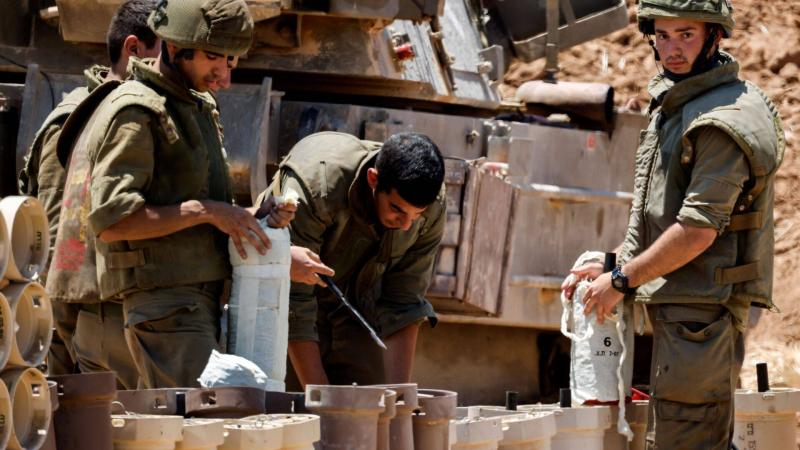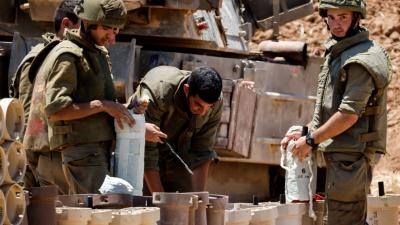The killing of Staff Sergeant Ahmad Abu Latif, along with 20 Israeli soldiers and officers in the Gaza Strip, has once again highlighted the role of Arab Bedouins in the Israeli army. The deceased soldier was from the city of Rahat in the Negev Desert, southern Israel, and was 26 years old, serving in the Bedouin reconnaissance unit. According to the Israeli army, on Tuesday, 21 of its soldiers were killed in the worst incident since the beginning of the ground operation in Gaza at the end of October, raising the total number of its casualties in the region to 221. Israeli army spokesman Daniel Hagari stated that the causes of the incident range from armed personnel launching an "RPG" rocket to explosions of mines planted by Israeli forces intended to demolish buildings later, especially since the incident was accompanied by two explosions. The Hebrew newspaper "Jerusalem Post" noted that Ahmad Abu Latif was a security guard at Ben Gurion University, was married, and had a daughter.
Bedouins make up about 10 percent of the total Arab population in Israel, with the majority concentrated in the Negev Desert, which has more than 300,000 Bedouins living in villages not recognized by the government.
**What is the Bedouin Battalion?**
In 1985, Ali Khalif from the Khalif tribe proposed to the Chief of Staff of the Israeli army to establish the unit as an institutional framework to recruit Bedouins on a voluntary basis. It was established in 1987, allowing Bedouins to serve in the Israeli army for the first time in roles other than tracking. It currently operates under the command of the Gaza Area Command of the Israeli army. According to the Israeli website "Walla," there are 1,514 soldiers from the Bedouin community in the army, including 84 officers. In 2005, Colonel Wasfi Sawadis, a Bedouin, took command of the battalion, and it is currently led by Lieutenant Colonel Nader Eidat. Its soldiers train at the Givati Brigade base in Ktsiot, where their tasks include monitoring the border with Egypt to prevent arms smuggling and combat operations in the Philadelphia Corridor south of Gaza. They have clashed with Palestinian factions, resulting in the deaths of five battalion soldiers during an operation at the end of 2004 near Rafah.
**Visit by Senior Officials**
On November 13 last year, Israeli Prime Minister Benjamin Netanyahu visited the Bedouin Desert Patrol Battalion "585," which is under the command of the Southern Brigade. Netanyahu received an overview of the unit's activities from Battalion Commander Nader Eidat regarding the battles they fought on October 7, which is considered the beginning of the war between Israel and Hamas. He stated, according to the Israeli government's website: "I am here with the Bedouin patrol battalion with Commander Nader and the brave warriors, both Jewish and Bedouin leaders, standing side by side. They fought bravely, and they are now fighting bravely. They are protecting our country in a remarkable way and through an amazing partnership." He added, "I salute you and trust you. You are our future. Our partnership is our future."
**What We Know About the Negev**
The Negev is a desert area in southern Israel, shaped like an inverted triangle, with its eastern border in the Arava Valley and the western border adjacent to the Sinai Peninsula. The word "Negev" in Arabic means a decline or descent, and the desert is named as such due to its diverse terrain of mountains, valleys, desert plains, and rolling hills. Its area is 14,000 square kilometers, and the Arab population in it has exceeded 300,000 citizens, about 150,000 of whom are spread across 45 villages that are not recognized by Israel, and the government does not provide them with electricity, water, medical clinics, or infrastructure. The Arabs of 1948, who remained on their lands after the establishment of the state of Israel in 1948, make up about 21 percent of the population.
The most important cities in the Negev include Beersheba, Rahat (the second-largest city in the Negev), Ar'arah, Tel Sheva, Tel Arad, Kasifa, Houra, Laqiya, Um Batin, Shaqab Salam, Um Hiran, Um Matan, Al-Qasr, Aksham, Al-Asam, Bir Hadag, Wadi Al-Na'am, and Tarabin Al-San'a. Geographically, the Negev can be divided into five regions: the Arava Valley, the high plateau, the central region, the western region, and the northern Negev.




